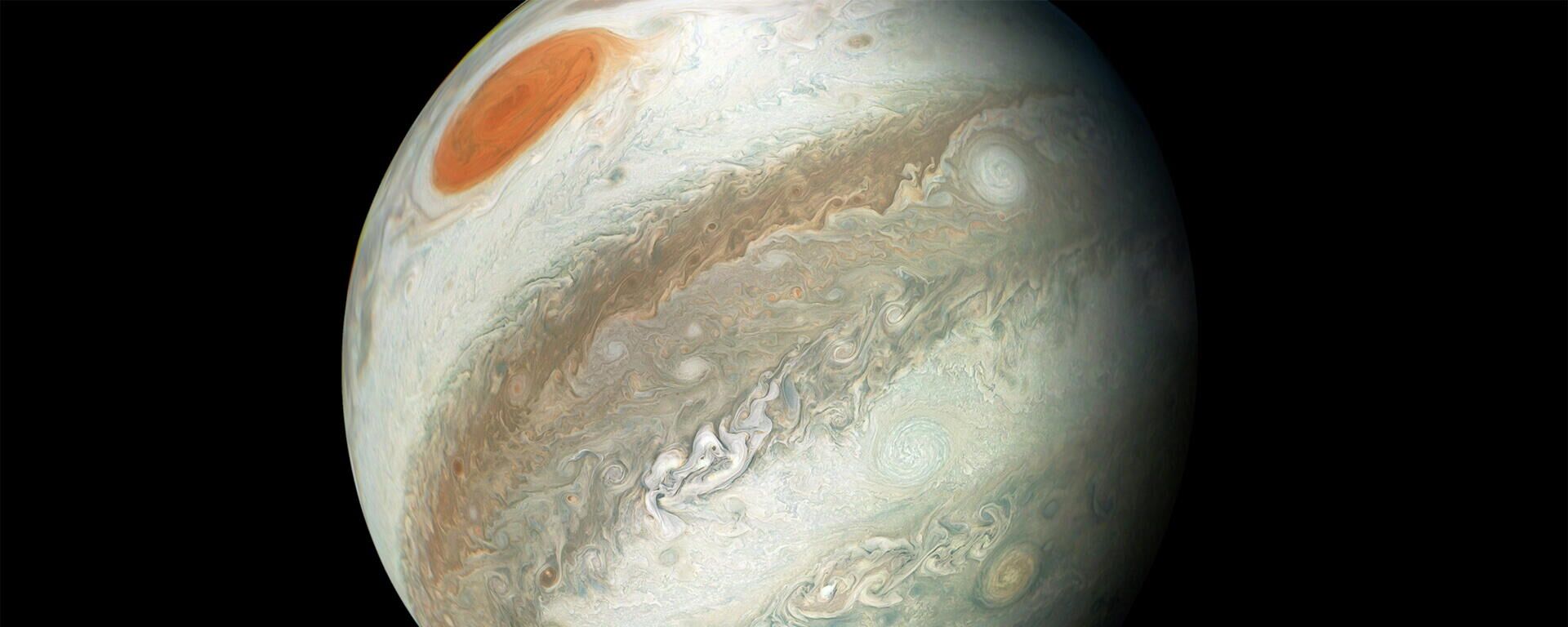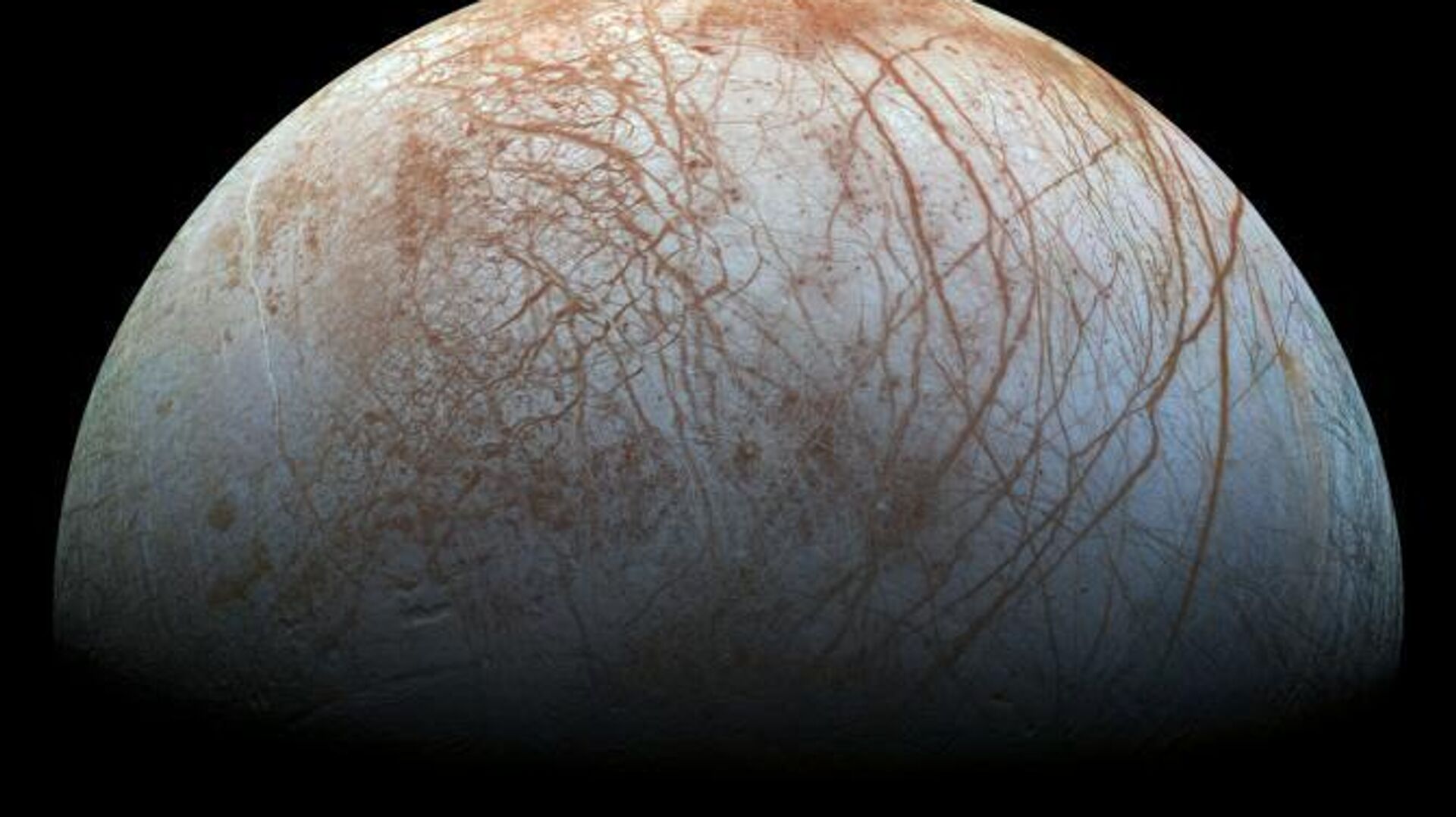https://sputnikglobe.com/20230922/scientists-find-carbon-on-jupiters-moon-europa-raising-questions-about-habitability-1113595323.html
Scientists Find Carbon on Jupiter's Moon Europa, Raise Questions About Habitability
Scientists Find Carbon on Jupiter's Moon Europa, Raise Questions About Habitability
Sputnik International
This revelation suggests that the subsurface ocean of Europa may contain essential ingredients for life, since carbon is a fundamental element for life on Earth.
2023-09-22T22:58+0000
2023-09-22T22:58+0000
2023-09-23T05:58+0000
beyond politics
science & tech
jupiter
europa
nasa
james webb space telescope
cornell university
space
space exploration
https://cdn1.img.sputnikglobe.com/img/07e6/03/1a/1094222738_0:60:671:437_1920x0_80_0_0_0b2ad9c3059451c256810f0650eb0b27.jpg
Scientists have detected the presence of carbon on Europa, one of Jupiter's intriguing moons renowned for its icy surface concealing vast oceans of liquid saltwater below. The discovery was made possible through the analysis of data collected by NASA's James Webb Space Telescope.Previous observations had identified solid carbon dioxide on Europa's surface, but uncertainty persisted about its origin - whether it was indigenous or brought in by external sources such as meteorites. The recent research offers a compelling answer to this question while raising even more profound inquiries.The majority of the detected carbon dioxide was found within a region known as Tara Regio, where sodium chloride - table salt - was previously identified. Tara Regio, often referred to as "chaos terrain," exhibits a fractured landscape, possibly resulting from interactions between the moon's icy surface and the speculated subsurface ocean.It's important to note that when scientists refer to a "habitable environment" on Europa, they are alluding to a salty ocean concealed beneath an ice shell estimated to be 10 to 15 miles thick. Europa is subjected to harsh conditions, with sunlight being approximately 25 times fainter than on Earth and relentless radiation and gravity from Jupiter.However, these extreme conditions could also yield the heat and nutrients necessary for life, thanks to tidal flexing.Despite the stark differences in environmental factors, the discovery of carbon on Europa has stirred excitement within the scientific community. Europa, though smaller than Earth's moon, is believed to harbor more than twice the amount of water present in all of Earth's oceans combined.This groundbreaking revelation comes ahead of NASA's ambitious Europa Clipper mission, set to launch in October 2024 and arrive at Europa in 2030.The studies were published in the Science journal.
https://sputnikglobe.com/20230901/watch-amateur-astronomer-films-object-striking-jupiter-1113062922.html
jupiter
europa
Sputnik International
feedback@sputniknews.com
+74956456601
MIA „Rossiya Segodnya“
2023
News
en_EN
Sputnik International
feedback@sputniknews.com
+74956456601
MIA „Rossiya Segodnya“
Sputnik International
feedback@sputniknews.com
+74956456601
MIA „Rossiya Segodnya“
jupiter, moon europe, is there life in space, is there life on other planets, are other planets habitable, are there oceans on jupiter europe, oceans inn space, what is tara regio, europa clipper mission
jupiter, moon europe, is there life in space, is there life on other planets, are other planets habitable, are there oceans on jupiter europe, oceans inn space, what is tara regio, europa clipper mission
Scientists Find Carbon on Jupiter's Moon Europa, Raise Questions About Habitability
22:58 GMT 22.09.2023 (Updated: 05:58 GMT 23.09.2023) One of more than 90 Jovian moons, Europa is considered to be one of the more promising celestial bodies that could host an environment suitable enough to support a form of life.
Scientists have detected the presence of carbon on Europa, one of Jupiter's intriguing moons renowned for its icy surface concealing vast oceans of liquid saltwater below.
The discovery was made possible through the analysis of data collected by NASA's James Webb Space Telescope.
"On Earth, life thrives on chemical diversity, and carbon is an essential element for our existence. Understanding the chemistry of Europa's ocean will help us determine whether it's hospitable to life as we know it," said Geronimo Villanueva, lead author of one of the research papers and a planetary scientist at NASA's Goddard Space Flight Center.
Previous observations had identified solid carbon dioxide on Europa's surface, but uncertainty persisted about its origin - whether it was indigenous or brought in by external sources such as meteorites. The recent research offers a compelling answer to this question while raising even more profound inquiries.
"We now think that we have observational evidence that the carbon we see on Europa's surface came from the ocean. That's not a trivial thing. Carbon is a biologically essential element," added Samantha Trumbo of Cornell University, the lead author of the second paper on carbon presence.
The majority of the detected carbon dioxide was found within a region known as Tara Regio, where sodium chloride - table salt - was previously identified. Tara Regio, often referred to as "chaos terrain," exhibits a fractured landscape, possibly resulting from interactions between the moon's icy surface and the speculated subsurface ocean.
It's important to note that when scientists refer to a "
habitable environment" on Europa, they are alluding to a salty ocean concealed beneath an ice shell estimated to be 10 to 15 miles thick. Europa is subjected to harsh conditions, with sunlight being approximately 25 times fainter than on Earth and relentless radiation and gravity from Jupiter.

1 September 2023, 20:20 GMT
However, these extreme conditions could also yield the heat and nutrients necessary for life, thanks to tidal flexing.
Despite the stark differences in environmental factors, the discovery of carbon on Europa has stirred excitement within the scientific community. Europa, though smaller than Earth's moon, is believed to harbor more than twice the amount of water present in all of Earth's oceans combined.
This groundbreaking revelation comes ahead of NASA's ambitious
Europa Clipper mission, set to launch in October 2024 and arrive at Europa in 2030.
The Europa Clipper mission is poised to be NASA's most extensive spacecraft endeavor, featuring large solar panels to operate in the distant reaches of the solar system.
It will conduct nearly 50 close flybys of Europa, some as close as 16 miles from the moon's surface, shedding further light on this enigmatic world and its potential for hosting life.
The studies were
published in the
Science journal.





